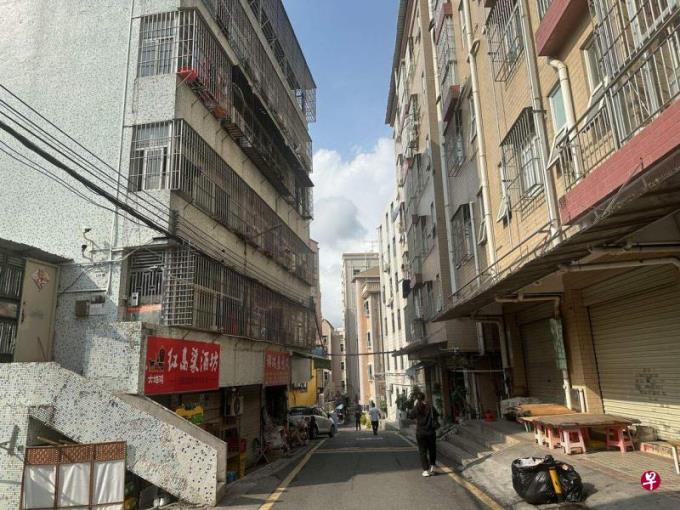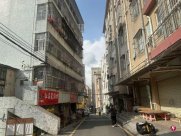
Introduction: Song Ding, a researcher at China (Shenzhen) Comprehensive Development Research Institute, said in an interview that the government is in the process of dealing with the rents of Baimang Village.Essence
In mid -May of Shenzhen, "unified rent" was performed in a village in a city. Some timely tenants moved away from the time limit for the landlord for more than a month, causing a lot of scolding.
Bai Mang Village, located in Nanshan District, Shenzhen, is a city in the city where tens of thousands of tenants live.The tenants of Baimang Village received a notice of relocation in mid -May, stating that the village would "unified rent" under the leadership of the government, requiring tenants to move away by the end of June.
Unified rent refers to the rectification of all the houses in the village uniformly in state -owned enterprises, upgrade the surrounding supporting facilities, and then rent it uniformly.
Suddenly moved out of the time limit for many tenants to vomit bitter water, lamenting that it was impossible to find renting a house at the same price nearby in a short time, worried that the rents after the reconstruction house rose and the child's school was going to school.
Regarding the various doubts of tenants, the official responded one by one, and emphasized that "the principle of rent after the transformation does not increase the price", trying to alleviate the public's concerns.The Office of the Headquarters of the Bai Mang Village Comprehensive Remediation Project also announced that it has been suspended to sign a contract with the landlord, so that the relevant disputes have come to an end.
The reporter visited Baimang Village in mid -June and found that all the slogans and notifications about the renovation and renovation of the propaganda have all been withdrawn; however, the villagers' chats are still inseparable from the topics such as "moving" and "rent".
Mr. Zhou, who has lived in Baimang Village for more than 20 years, told reporters that the landlord had signed a contract with the unified rent company earlier and asked him to move away by July 10.
He lamented: "The rent of Baimang Village is almost the lowest in Nanshan. We have not found a new residence, and the rent of nearby houses has risen because of unified rent. If there is no other choice in the end, we can only leave Shenzhen and return to my hometown."
The controversy of "unified rent" in Baimang Village reflects the complex and special status of the village in Shenzhen in Shenzhen, and the challenges facing the official promotion of affordable housing transformation.
A total of about 5.8 million houses in Shenzhen Chengzhong Village, of which more than 80%are used for rent, which absorbs more than 10 million people.Unified rental transformation is part of the municipal government's promoting affordable rental housing. It aims to raise 740,000 affordable housing by the construction of 2025, of which 600,000 are leased to solve local housing problems.
Ma Lian, an American anthropologist who has lived in Shenzhen for 28 years and has been paying attention to the village in the city for a long time, pointed out in an interview with Lianhe Morning Post that the unified lease of Baimang Village has rebounded strongly, because for many children in the village,The time point is extremely embarrassing."At that time, the students who were moved away would not be able to transfer to other schools, not to mention the end of the primary school students at the end of June."
Song Ding, a researcher at the Institute of Comprehensive Development of China (Shenzhen) Comprehensive Development Research Institute, judged that the government was “overwhelming” in dealing with the rents of Baimang Village, and lacking to communicate with the tenant level.question."This makes people feel that the government has forcibly got the house from the people at a low price, and then renovated and then raised the price lease. This is to fight for the people."
He believes that the government's approach is too cut -off. "The entire process is very rough, no refinement, and no humanized management." Such a management model is difficult to accept in Shenzhen, led by a market economy.
Ma Li'an judged that no one would deny that the government hopes to improve the original intention of people's living environment through rents, but this highlights the disconnection of policies from the actual needs of the people."From an objective level, no one is wrong. But the key is that the ultimate power is biased to which party and which side's words can be heard."
City village is a historical product in the process of urbanization in Shenzhen.In the early days of China's reform and opening up, the government recovered a large number of farmland from local villagers, and set the scope of new villages on the basis of these land to form the "city village" that was seen today.
As a special economic zone, Shenzhen's preferential policies have attracted a large number of large enterprises to enter, prompting the influx of inland workers from all directions and laying a foundation for the local leasing market.Driven by economic interests, the original villagers in the village in the city began to expand their houses to the greatest extent to rent.
The architectural designer of the Maibo Design Consulting Company He Quanxing believes that the city village plays a pivotal role in Shenzhen's development.He explained that most urban villages in Shenzhen are in the center of the urban area and have comprehensive convenience services to provide convenient and low -cost accommodation for middle -level migrant workers and young entrepreneurs and new immigrants.
He said: "These spaces inject more vitality to Shenzhen and drive the economic development of the city. Imagine that if Shenzhen has always been a noble place, there will be no first batch of people to start a business."
The local government of Shenzhen has started to cooperate with developers more than 20 years ago to reconstruct the village in the city.However, due to the complexity of the interests involved in the project, the difficulty of demolition is difficult, and there are not many successful cases.
Handling the city in the city to change from a large demolition and large construction to comprehensive governance
In the past five years, Shenzhen has begun to carry out a large -scale demolition and large -scale reconstruction model from the early villages in the city, and has shifted to comprehensive improvement of upgrading on the basis of existing buildings.
He Quanxing pointed out that under various factors such as limited land and high housing prices, the government's shift to the urban villages where the concentration of housing concentration seems to be inevitable.The key to his judgment, the key to the success of the plan is how the official should renovate the old house through innovation and do full negotiation to ensure that the rights and interests of all parties can be reasonably protected.Compared with large -scale demolition, congratulations believe that this comprehensive renovation modification model will reduce unnecessary waste of demolition and construction, and avoid wiping away the collective memories of the city in Shenzhen in Shenzhen history and culture and people's hearts.
Although Song Ding believes that there is room for improvement in the method of dealing with the rents of Baimang Village, he also foresees that under the government -led transformation and unified rental plan, the future urban villages will have more efficient housing functions and grass -roots governance.Models, hidden dangers such as hygiene and fire protection will also be improved.Citizens can also rent a relatively stable house under the model of rents, without having to face the landlord's random price increase every year.



